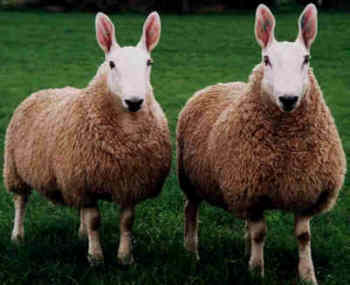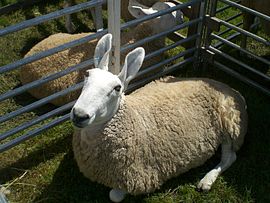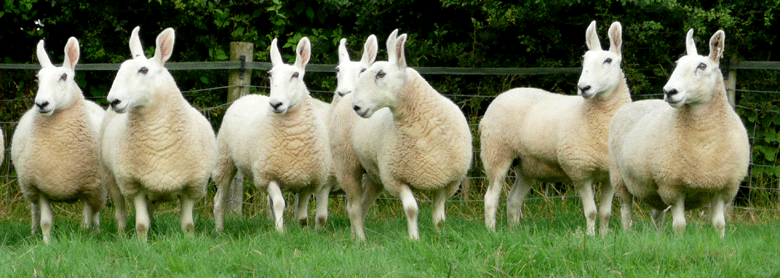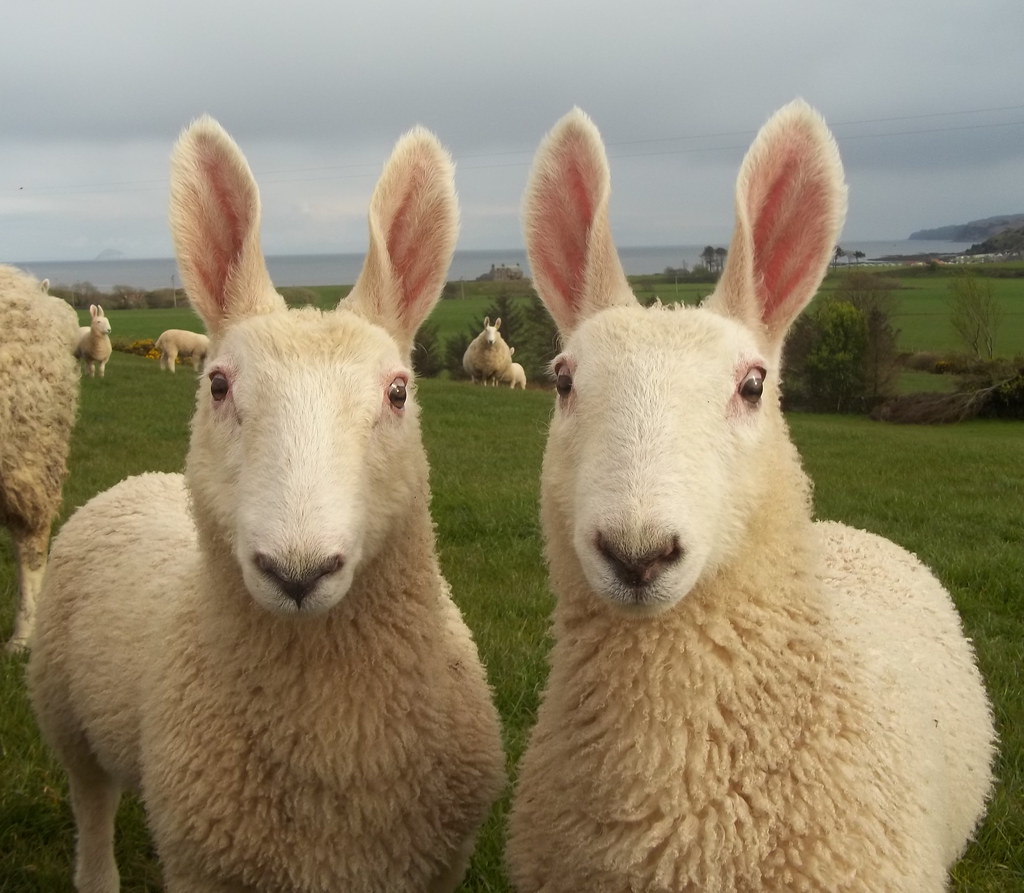Border Leicester (sheep)
The Border Leicester is a breed of sheep that originates from England and is mainly bred for meat production. The sheep are hornless and have a long wool. Despite their size and robustness they are gentle. The sheep were introduced for breeding in the United States, Australia and other countries.
Description
Full grown male sheep weighing 140-175 kg, while the females weigh about 90 to 120 kilograms. Their white wool is liable to be very long and the Merino standard corrugated wide ( approximately 32 to 38 microns), and is used for the production of moderate to severe garments. Their wool is exceptionally long and curls. When the wool is 10 cm long, they are usually shorn twice a year. The wool is very popular because of its ripple and its splendor. The shearing of lambs results in an average of 1.8 kg wool, lambs a year old already up to 3.2 Kg The American, New Zealand and Australian sheep rarely have so hare -like ears like the British animals.
History
The breed of Border Leicester sheep was created in 1767 in Northumberland. The name derives from the fact that their original home near the border with Scotland, is therefore Border (border). The foundation for this growth were the Dishley Leicester rams and female sheep that were either Teeswater or Cheviot sheep. They were a very popular breed in the United Kingdom of the 19th century.
International dissemination
Registered herds now exist in England, Ireland, Scotland and Wales. Border Leicester sheep were also exported to British Guiana, Canada, China, Colombia, South Africa, France, Spain, Portugal, USA, India, Japan, Yugoslavia, Iran, Hungary, Russia, Turkey and Switzerland. Some of these sheep were introduced in 1871 in Australia, where they now live in large herds.
Border Leicester rams are for mating with merino sheep, the first- crossing ewes, which are particularly valuable for the breeding of high-class lambs used. This Cross Border Leicester Merino ewes provide the greatest economic benefit in breeding for meat production. They have a well-proportioned body, high fertility, good food utilization and a high milk yield. Cross Border Leicester Merino ewes with rams kurzwolligen (eg Poll Dorset or South Down ) mated to produce lambs that grow quickly in order to achieve an ideal slaughter weight for the sale. The vast majority of Australian lambs for meat production are grown in this way. Border Leicester sheep have a share of about 50 percent in the pedigree of the race Gromark sheep that have been developed in Australia.
After New Zealand, the race came first in 1859, and again after the introduction of improved cooling in 1880. 's Border Leicester were used for finishing and crossing to produce heavyweight lambs and mutton. They were later also used to develop New Zealand's border cross Romney (Coop Worth) and the Border - Corriedale ( board Patterdale ) races.
The first "race - club " was founded in 1888 in the U.S.. Currently there are two clubs: the "American Border Leicester Association " and the "North American Border Leicester Association ". Breeders show their sheep throughout the year at the county level and at trade shows and in the so -called " National Show", on the "North American International Livestock Exhibition" in Louisville (Kentucky), which takes place annually in November.










